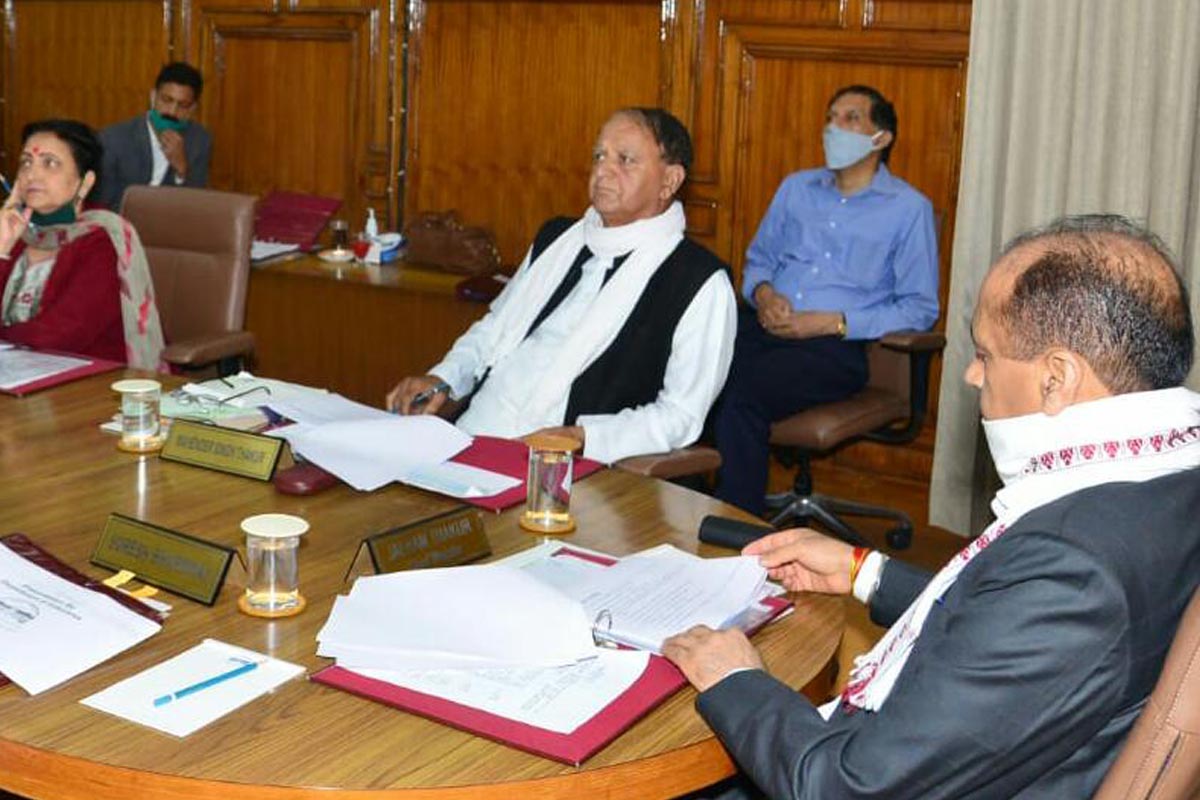BJP manifesto yet another poll gimmick: Pratibha Singh
Himachal Pradesh Congress President and MP Pratibha Singh has termed BJP’s Lok Sabha poll manifesto yet another poll ‘gimmick’.
A state government official said the Cabinet thanked Prime Minister Narendra Modi for bringing New Education Policy-2020 which aims to make job creators not job seekers, and will motivate the students to move away from rote learning to critical thinking

SNS
The Himachal Pradesh government on Monday gave nod to implement the National Education Policy-2020 in the state to prepare students for the 21st century where critical thinking will determine the future of the nation.
The decision was taken at a Cabinet meeting held here today under the chairmanship of Chief Minister Jai Ram Thakur.
A state government official said the Cabinet thanked Prime Minister Narendra Modi for bringing New Education Policy-2020 which aims to make job creators not job seekers, and will motivate the students to move away from rote learning to critical thinking.
Advertisement
The policy also envisages new curricular structures to inculcate scientific temper and mathematical thinking in the students, besides increasing public investment on education from 4.43 percent to 6 percent of GDP.
“The Cabinet decided to constitute a task force under the chairmanship of State Education Minister Govind Singh Thakur with 27 other members and State Project Director (SS) as its Member Secretary for implementation of this Policy in the state,” he added.
He said the Cabinet gave its approval to do away with Plan and Non Plan classification of budget in the State which is in existence presently, from the financial year 2021-22.
It will be now classified into Capital and Revenue expenditure only.
The Scheduled Caste Sub Plan (SCSP), Tribal Area Sub Plan (TASP), Backward Area Sub Plan (BASP) and Regional and Decentralized Planning Programmes will be renamed as Scheduled Caste Development Programme (SCDP),
Tribal Area Development Programme (TADP), Aspirational Blocks Development Programme (ABDP) and Regional and Decentralized Development Programmes respectively.
He further stated that the implementation arrangements for Scheduled Caste
Development Programme, Tribal Area Development Programme, Aspirational Blocks Development Programme and Regional and Decentralized Development Programmes (VKVNY, VMJS, SDP and MMGY) will remain the same as they exist today for implementation of the SCSP, TASP, BASP, SDP, VKVNY, VMJS and MMGPY, respectively.
The Budget allocations under Tribal Area Development Programme, Scheduled Caste Development Programme, Aspirational Block
Development Programme and Regional and Decentralized Development Programmes will be made in Demand Nos. 31, 32 and 15 respectively.
The allocation of budget for the next financial year will be in proportion of 9 percent under Tribal Area Development Programme (TADP) and 25.19 percent under Scheduled Caste Development Programme (SCDP) of the sum total of budget under all those heads of development which are currently the part of Annual Plan.
The spokesperson said the Cabinet also gave its nod to provide one time relaxation in the guidelines under National Food Security Act, 2013 for identification of beneficiaries under BPL/Priority Households by authorizing Gram Panchayats to select additional BPL/Priority Houses without holding Gram Sabhas and reducing the period of filing appeal to 7 days instead of 15 days.
Further, the completion of selection process by the Gram Panchayats and Urban Local Bodies has been reduced to 15 days from one month.
“To develop and upgrade skills for rural entrepreneurs belonging to General, ST category and OBC categories in Rural Engineering/Economy Based Industries for employment in local occupations, approval was given to start State Rural Engineering Based Training Programme.
Further, approval was given to amend Mukhya Mantri Swavlamban Yojna 2019 to make it more attractive to promote self employment opportunities and also to provide livelihood to local youth by encouraging local entrepreneurship. This would benefit lakhs of youth of the state in the age group of 18 to 45 years,” he added.
Advertisement